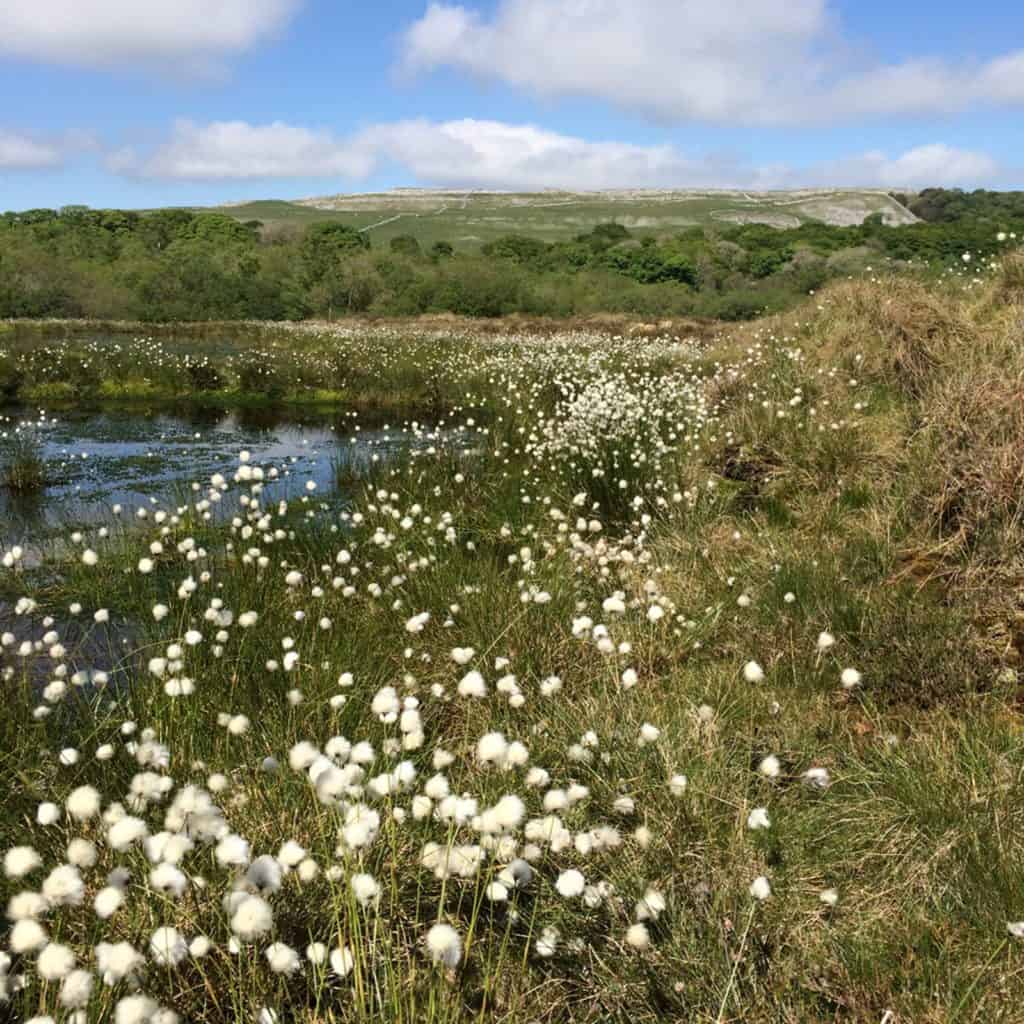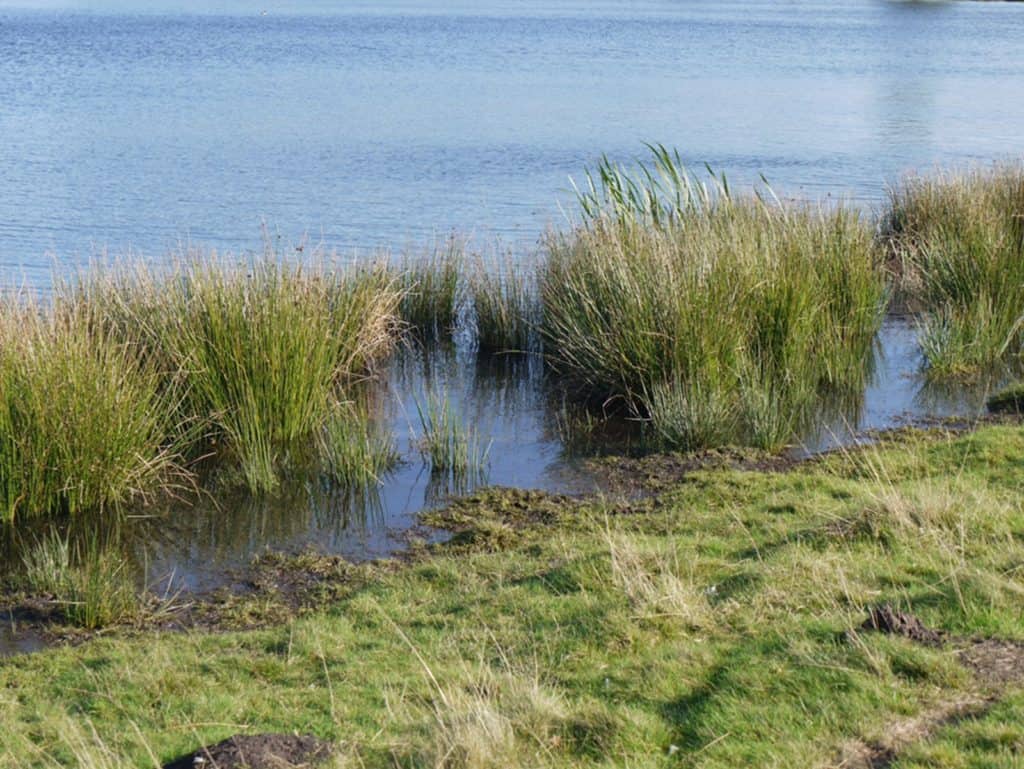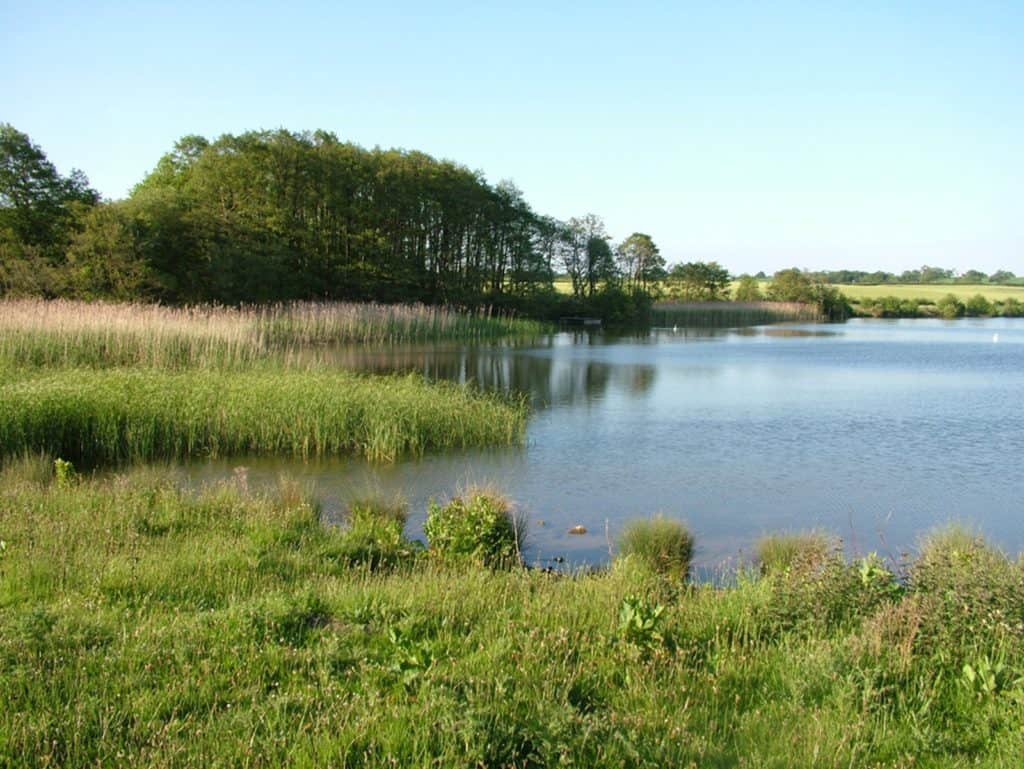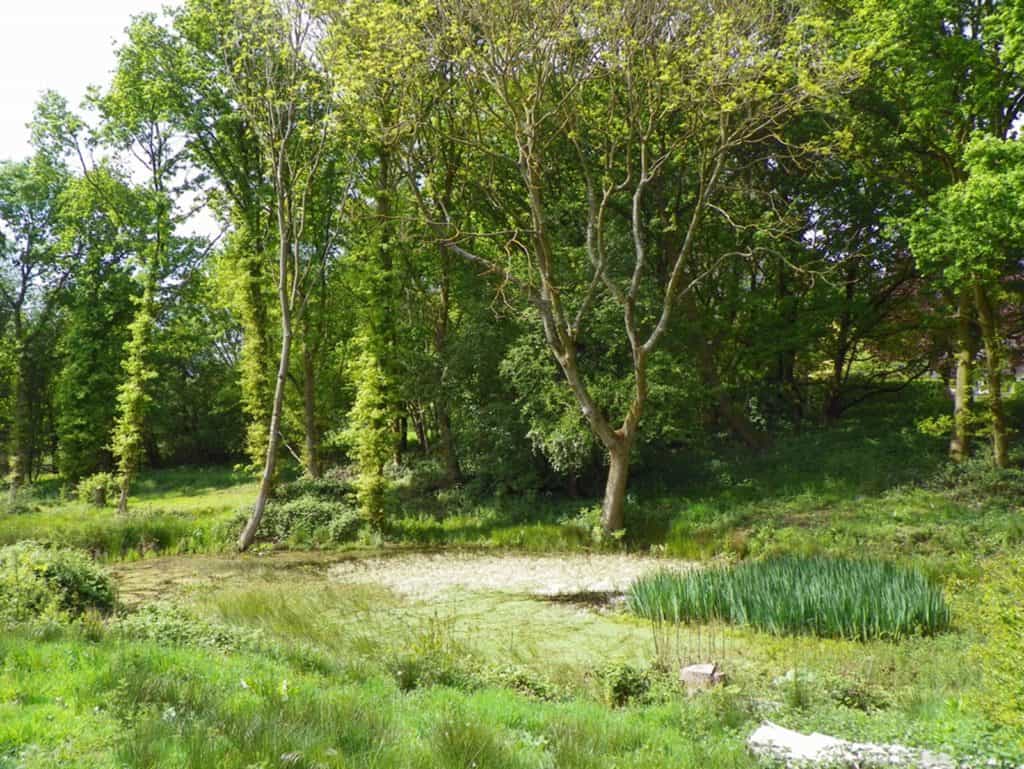What is this habitat like?
Primary succession can happen when mud is colonised by plants. Over a period of years the pond may steadily lose the open water as vegetation takes over. Eventually the pond will disappear altogether. Succession from open water is sometimes called a hydrosere.

Although succession takes place over time, different parts of a wetland system can be taken to represent different stages of succession. Of course, this assumes that the sand dunes are advancing at a constant rate, which may be contradicted by historical evidence.
Read more about the succession in freshwater, or read on for investigation questions.
What questions do biologists ask?
You can ask scientific questions about the wetland environment. Here are some examples.

- What challenges are there for plants in this environment?
- What are the key features of the dominant plant species?
- What adaptations do the plants have to help them survive in this environment?

- How does vegetation change with distance from the open water?
- Why does soil get deeper over time?
- Where is biodiversity highest?

- What will this pond look like 10 years from now?
- Why do people sometimes prefer to deflect succession?
- How could this be done?
What questions could you investigate by fieldwork?
Here are some examples. Each research question has been split into 2 or 3 sub-questions.
| Research question | Sub questions |
|---|---|
| Is primary succession happening at place x? | Does the distribution and abundance of vegetation change with distance from the open water? How and why do abiotic factors change with distance from the open water? What evidence is there of different seral stages? |
| How and why does the vegetation vary between two places in the wetland? | Does the distribution and abundance of vegetation change vary between the two places? How and why do abiotic factors vary? What adaptations do plants have in the two places? |
| What is the impact of human disturbance on the wetland at place y? (e.g. tree felling, grazing by livestock, footpath erosion) | Does the distribution and abundance of vegetation change vary between a disturbed and an undisturbed place (e.g. grazed vs ungrazed fixed wetland)? How and why do abiotic factors vary? What evidence is there for deflected succession? |
Synoptic links
A good investigation makes links between different parts of the Biology specification. Here are some possible synoptic links for investigations into sand dunes.
| Synoptic link | Detail |
|---|---|
| Adaptation | r and K strategies – pioneers are r-selected while climax plants are more K-selected |
| Gas exchange | Adaptations to anoxic mud – arenchyma |
| Nitrogen cycle | Legumes with nitrogen-fixing bacteria in root nodules, free-living nitrogen-fixing bacteria in soil e.g. Azotobacter, ammonification by fungi and bacteria |
| Carbon cycle | Role of decomposers and detritivores in soil formation |
| Trophic levels and energy transfer | Role of chemoautotrophs in anoxic mud Primary productivity (NPP is highest before the climax community) |
| Photosynthesis | Limiting factors such as soil nitrogen |
| Conservation | Management of successsion for conservation, e.g. grazing |
Succession in freshwater
Stage 1: Migration
An area of deep freshwater is not initially capable of supporting rooted, submerged plants because not enough light for photosynthesis can reach the depths. Insects such as pond skaters and water beetles might arrive. They have the ability to fly between ponds, especially if their pond is drying up or overcrowded. This immigration might bring spores of other creatures such as diatoms and algae. Microscopic plant and animal material may also get blown in by the wind. Upon dying these organisms sink to the bottom of the water, along with silt and sediments that are transported into the lake (or pond) by rivers, streams or surface runoff. Large amounts of sediment can be deposited in this way, and the water depth will slowly decrease as a result.
Herons and ducks will visit the water in hope of food. In the process they may carry seeds of plants and eggs of animals. These will stick to the legs and feathers, especially if they have been treading in the mud of a well established pond before arrival. If there is an inflow of water to the pond that too will bring in new organisms. If the seeds and spores are able to germinate and grow, the community enters the next seral stage. The migration stage will continue for as long as the community continues to develop.
Stage 2: Colonisation
Seeds and spores germinate and develop. Physical conditions are harsh. As there is lots of bare ground between plants, the vegetation is described as ‘open’. The plants that are able to grow in these harsh conditions are specialised to their environment, and are termed pioneer species.
Gradually, as the pond fills in with this material, the shallower water around the edges of the lake will be able to support plant material. This is because sufficient amounts of light can now penetrate for photosynthesis. Rooted submerged plants, such as starwort (Callitriche stagnalis) and pondweeds can start to grow. Waterlilies, which are rooted but with floating leaves, may become established; and floating plants, such as duckweed (Lemna gibba) may also be present.
The presence of these species in the environment will slowly begin to improve the abiotic (non-living) conditions, for example by providing shelter for animals and reducing the effect of the wind on the surface of the water. Each year dead organic matter accumulates at the bottom of the lake and increases the nutrient content of the water. This in turn promotes plant growth, and the additional vegetation is able to trap and hold more of the incoming sediment. This means that the water continues to become shallower. Over the years these plants become well established and may produce a dense cover of vegetation over the water surface.
Stage 3: Establishment
Species become more established on the site. The physical conditions have been modified and improved by the presence of the community, so there is an increase in the variety of species. The vegetation is becoming ‘closed’ as there if less bare ground available for vegetation.
The species that have colonised the water will slowly improve the conditions. Plants like frogbit or rooted ones like lilies take over the deeper water. They provide shelter for animals and begin to change the abiotic conditions like reducing the effect of the wind on the surface. Over years they will become well established and could produce a dense covering of lily leaves.
Each year dead organic matter produced by these plants begin to accumulate at the bottom. In time this makes the pond more shallow and reedmace, sedges and rushes start to take root. If the pond was shallow to begin with this wil have been an early coloniser. These grow close together and material, both organic and inorganic becomes trapped between them. This helps to fill the pond in yet further and these plants slowly invade the pond further towards the middle.
When water depth eventually becomes too shallow to support fully submerged plants, emergent swamp plants such as yellow iris (Iris pseudacorus), branched bur-reed (Sparganium erectum), and reed mace (Typha latifolia) will start to establish.
These plants tend to have tall, flexible spear-shaped leaves. This allows them to cope with large fluctuations in water level, always retaining some portion of the leaves above the water for effective photosynthesis. The leaf bases are extremely effective at retaining incoming silt, particularly in the winter when the leaves have died back. Combined with the accumulation of decomposing plant material, this causes a further decrease in water depth, and raises the level of the lakebed, making conditions drier. Swamp plants, which are adapted to grow in partially submerged conditions, will gradually die out and give way to marsh plants such as water mint (Mentha aquatica), brooklime (Veronica beccabunga) and soft rush (Juncus spp.).
Stage 4: Competition
The number of new species will be slowing down now. In fact the amount of free space is very limited and the chances are there will be few signs of open water. The pond is becoming choked with plants. The initial colonisers like the lilies may have disappeared through competition with reedmace.
Trees that favour wet soils, such as willow (Salix spp.) and alder (Alnus glutinosa) may also become established at this stage. These trees have a very high transpiration rate, transferring large quantities of water from the sediment into the atmosphere. Together with the silt-trapping effect of the marsh plants, this greatly increases the rate at which the marsh dries out. willow and alder carr produces a canopy of leaves which restrict the amount of light reaching the ground. Many of the marsh plants will become shaded out by the trees, and so in turn are replaced by a variety of woodland floor plants including sedges, rushes, ferns and small flowering herbs. By now the pond is little more than a swamp with damp ground around it. Young trees like alder and willow may be developing and competing with the reeds. Many of the sedges are quite small and will have been out-competed already.
With the reduction in the variety of plant communities the variety of animals will likewise be in decline. The pond diversity has peaked and is now diminishing as trees develop a canopy which will eradicate many of the plants.
Stage 5: Stabilisation
Few, if any, new species are added as competition resolves itself and the community becomes balanced. Each species occupies its own niche, and therefore avoids having to compete strongly with other species. The community stabilises and remains much the same over time.
The decline in species through competition results in a stabised community of those that can survive the swampland that predominates. Changes are slight with this community of alder and willow. These produce a canopy of leaves which restrict light and therefore what other plants can grow.
This encourages just those species able to develop in early spring before the canopy forms, e.g. marsh marigolds and certain sedges.
Stage 6: Climax
No new species are added and the community remains the same over long periods of time (theoretically forever). The vegetation is said to be in equilibrium with the environment; a true state of balance has been achieved. The type of climax vegetation present is determined by the climate of the area, wind speeds and direction, animal grazing, pH, temperature and many other factors. The climatic climax for the UK as a whole is deciduous woodland (oak and ash trees).
Remember that succession is a temporal process; the community changes with time.

Secondary and Further Education Courses
Set your students up for success with our secondary school trips and courses. Offering excellent first hand experiences for your students, all linked to the curriculum.
Group Leader and Teacher Training
Centre-based and digital courses for teachers
Experiences for Young People
Do you enjoy the natural world and being outdoors? Opportunities for Young People aged 16-25.
